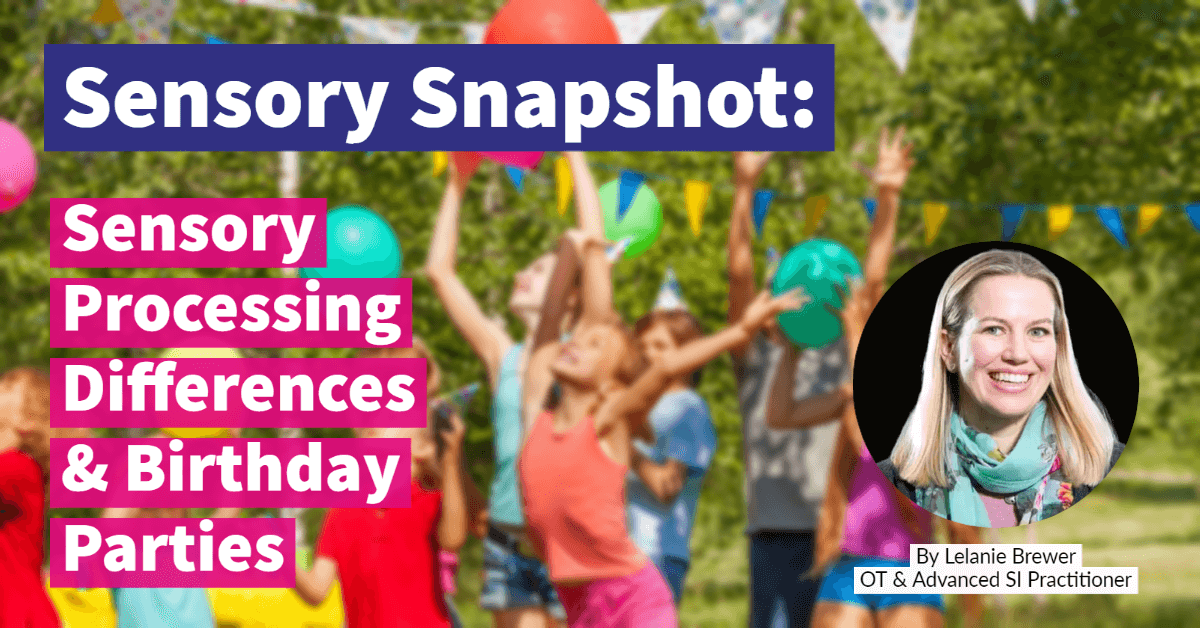Sensory Snapshot: Sensory Processing Differences and Birthday Parties
By Sensory Integration Education, 9 June 2023

In the Northern Hemisphere, it’s that time of year when the sun is out more often and the weather is ideal for outdoor birthday parties. For children’s parties, outdoor parties often contain an activity that requires good motor skills such as swimming, climbing, cycling or perhaps ball games. I recently attended a party that involved a ropes course and a zipline, where children had to be strapped into a harness. This not only required good motor planning skills but also presented challenges to individuals who are over-responsive to vestibular sensory input. This got me thinking about how you can still enjoy a fun day outdoors even if you have sensory processing differences.
First of all, as the host, make sure there is something for everyone. This refers to both food and activities. In relation to food, it is always important to check on the dietary needs of guests. A mix of food that appeals to different tastes is a safe bet to keep all children happy, for example, a combination of sweet and salty snacks. Crunchy vegetables are also good to include as these are suitable for children with a range of dietary needs and chewing crunchy food is also regulating for the nervous system, helping to bring down levels of over-excitement and over-stimulation. For younger children, consider party boxes with food ready to eat which involves minimal removal of wrappers or use of utensils. This helps children with motor difficulties keep up with their peers and means that they are not still eating when the other children are off participating in party games or activities.
When it comes to activities that accommodate everyone, it isn’t necessary to steer away from physical activities with motor and sensory demands but instead consider how the activity can be graded and adapted to suit a range of children’s needs. For example, many ropes courses and activity centres have different levels of challenges, making them appropriate for children with a variety of abilities. The same goes for arts and crafts - consider options for children who love to get messy and those who are over-responsive to tactile sensory input and might prefer a less tactile experience. Small accommodations mean that everyone can participate and have a great time.
Finally, words of encouragement and reassurance go a long way to put children with sensory processing differences at ease at a party or social event. It is important for children to learn from a young age that individuals have different sensory needs and abilities and that everyone can choose the level of an activity that feels most comfortable for them without the fear of being judged.
Best wishes
Lelanie Brewer
PS: If you’re looking for some practical tips on how to best prepare for the summer sensory challenges posed by the change in weather, daylight hours, breaks from school routines, eating outdoors, travelling, etc., you may be interested in our Summer Sensory Survival Kit. Click here for more details and to download your FREE copy!
Sensory Snapshot is a regular series by Advanced SI Practitioner and OT Lelanie Brewer. Lelanie gained her MSc in OT at Brunel University, London, and is pursuing a PhD with Newcastle University. Experienced in the NHS, charity and private sectors, as well as being a UK university senior lecturer, Lelanie is the Lead for Continuous Professional Development at Sensory Integration Education.

